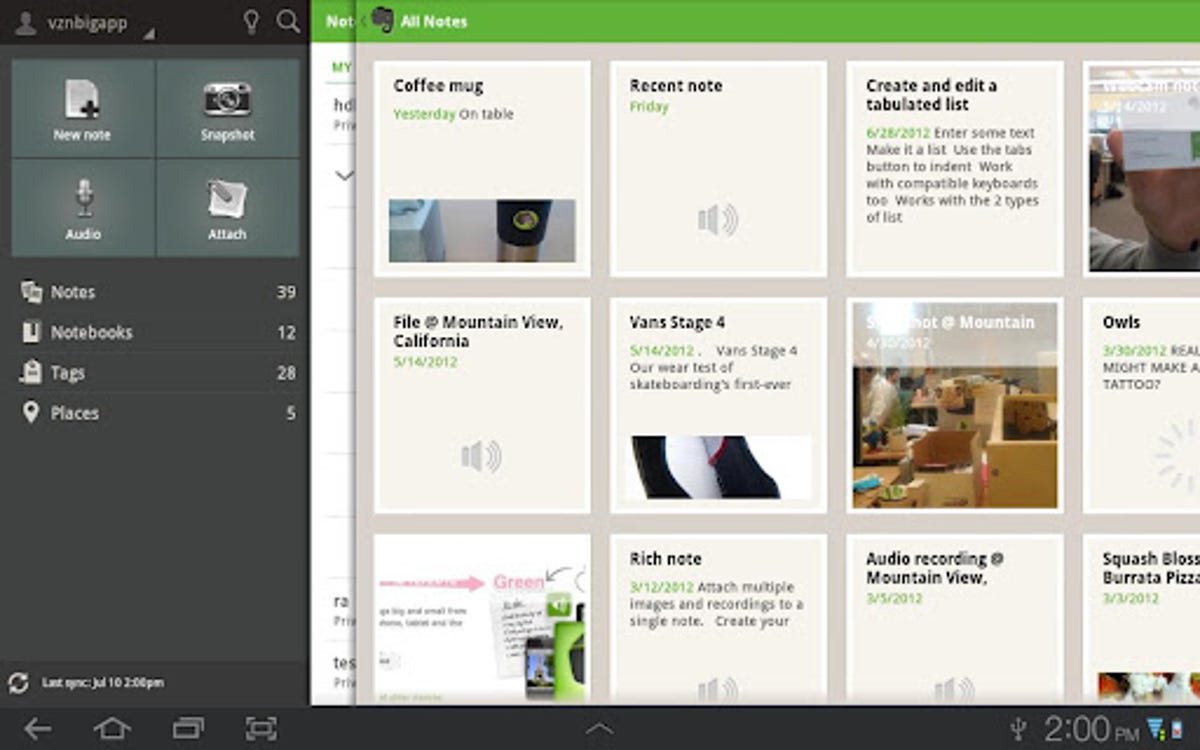Run a quick search for “notepad” on Google Play, and you’ll see that there are at least 1,000 apps claiming to fit the bill. The good news is, we’ve taken the time to show you a few notepads that are absolute must-haves, especially for students just getting back into the groove of school.

Evernote
Evernote (free)
These days, the all-powerful Evernote feels more like a platform than a single, independent app. It has a full menu of companion downloads like Skitch, Evernote Food, and Evernote Hello available, and tons of developers are racing to integrate its services into their third-party titles as well. Nevertheless, at its core, Evernote is still a fantastic note-taker.
In addition to its power across devices (there are native apps for most major platforms), what makes Evernote so special is its ability to incorporate different types of media into its notes. It lets you add text, voice clips, pictures, files, even location stamps. What’s more, you can collaborate on any of your notes with friends, so long as they’re Evernote members as well. And if you have a tablet, you’ll get an even more spacious playground and intuitive navigation to scrawl out your notes with.
Using Evernote is about the closest you’ll get to extending your brainspace onto a page. Read the full review.


Wunderlist
Wunderlist (free)
Different from an app like Evernote, which lets you scrawl paragraphs and embed photos with reckless abandon, Wunderlist is more of a powerful task manager. With it, you can create and organize lists into categories, share lists with friends, and even sync across different platforms. Within a list, you can prioritize items, add due dates, and include notes just beneath items. I have found the app to be useful for everything from grocery shopping to wedding planning, which, of course, makes it a perfect catch-all to-do app for that full load of classes you’re carrying.
As a bonus, Wunderlist’s sleek design and customizable backgrounds make it a pleasure to work with. Overall, Wunderlist is one of my favorite task managers because of its simplicity, flexibility across platforms, and attractive interface. Read the full review.


Amimetic
Write: Tablet Notepad/Journal ($2.99)
For a minimalist, no-nonsense text editor, look no further than Write. With its simple blank screen (choose from black or white background) and blinking cursor, Write minimizes distractions and helps you focus on finishing that big paper that’s due in a few hours. Just fire it up on your tablet, hook up a Bluetooth keyboard or other input device, and get in the zone.
As minimal as this app is, it also offers a few conveniences that writers and casual note-takers will appreciate. There’s a word counter at the top of the screen, and it has a character counter, autosave, font choices, and sharing. There are also sort functions and a quick keyword search tool, so you can easily find the notes you’re looking for. Overall, Write is a beautiful app that can help keep you focused on the task at hand. Read the full review.


Google Drive (free)
While Google Drive may not exactly qualify as a notepad app, downloading it on your Android device is a no-brainer. Not only does it offer a few gigabytes of free storage space in the cloud, it also, and perhaps more importantly, comes loaded with Google Docs. Now, if you’re a student, and you’re not using Google Docs, then I highly suggest you get with the program.
Google Docs gives you much of the power of a Microsoft Office, without taking up any precious disk space on your computer. Its programs are fully housed on Google’s servers, along with all of your text notes, presentations, spreadsheets, and other documents. What’s more, you can use Google Docs to collaborate with classmates in real time, whether you’re on a desktop computer, a tablet, or even a phone. It’s a godsend for group projects and could be a creative solution for live group note-taking while in class. Read the full review.



